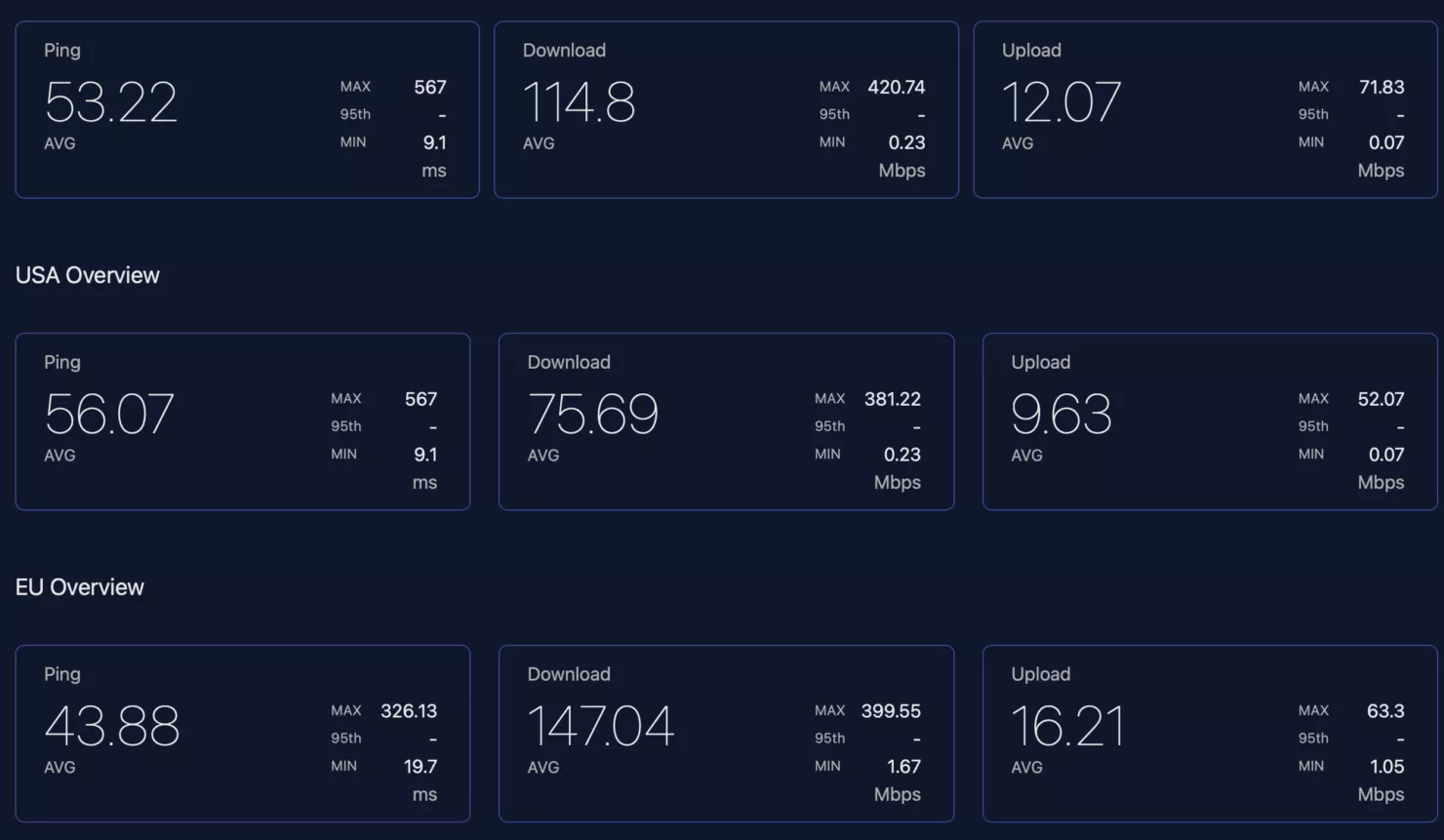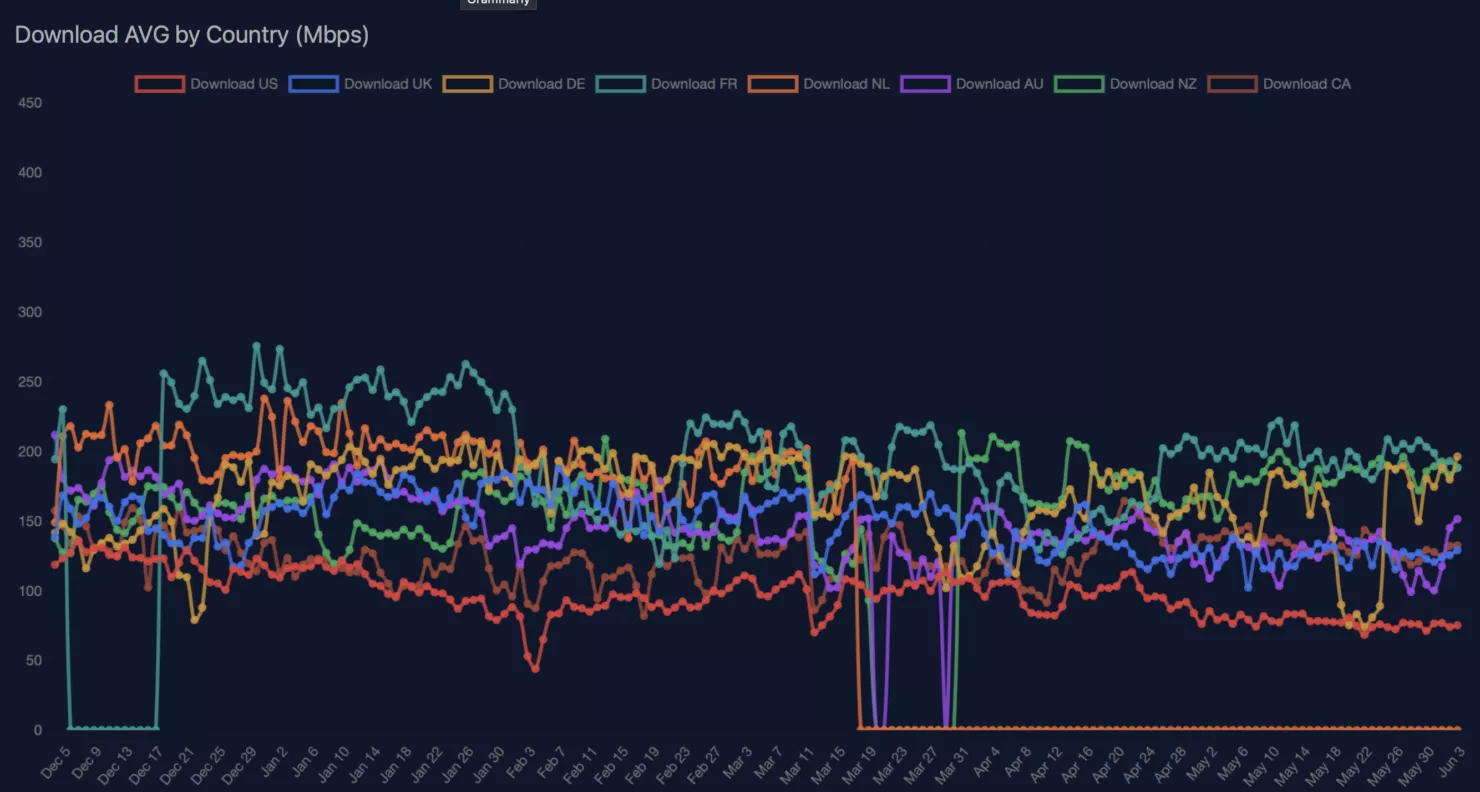As the Starlink Satellite Internet constellation of SpaceX continues to increase users, according to the data provided by some users of the service around the world, its average download speed continues to decline. Starlink's goal is to develop a satellite constellation consisting of thousands of spacecraft, and ultimately provide its users with the Internet connection that is least dependent on ground infrastructure.

Today's data comes from starlinkstatus, which has been displaying data collected from users since the first quarter of last year. This is a project that requires users to install software on their devices and provide information to the data repository. At present, as Starlink increases its global footprint, the number of countries contributing to the platform is also rising. New Zealand and Canada are the latest countries to join.
The website divides data from the United States, Europe and the rest of the world into three categories - Download and upload speeds and Ping values. Ping is often referred to as delay, which refers to the time required for data transmission from one user to another. It is used to evaluate the performance of a network in games, video conferencing and other applications.
In general, starlinkstatus uses data from 74 sites. Considering the hundreds of thousands of users using the service, this is just a drop in the bucket. The speed test analysis conducted by ookla is a better network performance indicator because it summarizes data from a large number of users compared with starlinkstatus.


The data shows that Starlink users in the United States see an average download speed of about 75mbps, an upload speed of 10Mbps and a delay of 56 milliseconds (MS). Last year, the results showed that the download speed of 141mbps, the upload speed of 20MBps and the delay of 51ms decreased respectively. However, a closer look at the data shows that Starlink's efforts to reduce latency are paying off.
Although the average delay has increased, the maximum value has decreased. As a result of last July, the maximum delay was 985ms, which was reduced to 567ms this time, which increased the improvement range by 41%.
The average speed in the EU and other countries has also declined. The data in July 2021 shows that the average download speed is 176 Mbps and 157 Mbps, the upload speed is 34 Mbps and 27 Mbps, and the Ping is 34ms and 44ms. This time, the download speed is about 147 Mbps and 115 Mbps, the upload speed is 16 Mbps and 12 Mbps, and the Ping is 16ms and 12ms. However, as in the case of U.S. users, both peak and minimum latency have improved significantly.
These changes are natural because the number of users who started using Starlink has increased since last July. According to the latest estimated data provided by SpaceX to the Federal Communications Commission in March, it now provides services to more than 400000 consumers worldwide. Compared with 145000 Starlink users at the beginning of this year, this is a great increase. In particular, due to the Falcon 9 rocket, the number of satellites that SpaceX can put into orbit continues to be limited. In this regard, SpaceX is developing its starship rocket, which will have the ability to launch hundreds of satellites in one launch, which is significantly higher than that of Falcon 9.